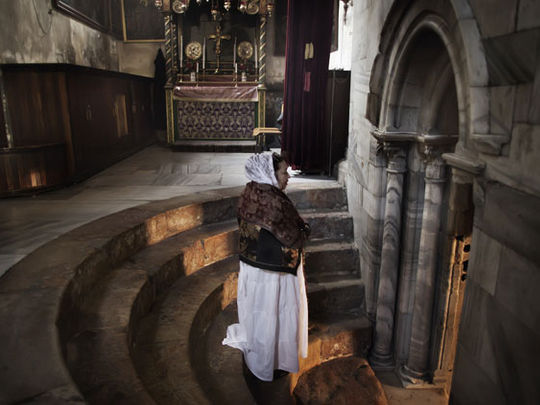
Dubai: Christianity is one of the two main monotheistic religions of the world and like Islam has its origins in the Middle East. However, there appears to be a clear divide between Orthodoxy in East and Roman Catholic in the West.
Gulf News Tablet Edition looks at the evolution of Christianity in the Middle East, which in some way explains why the Orthodox church has such a strong hold in the region.
The Middle East is home to one of the world’s most ancient Christian church - the Orthodox Church, originally founded by the apostles of Christ and referred to as the Eastern Orthodox Church. The Greek name for it literally means the Church that follows the ‘right teachings’.
The largest Christian group in the Middle East is the Arabic-speaking Egyptian ethno-religious community known as the Copts, who are mainly based in Egypt. And the Arab Christians, who are mostly adherents of the Greek Orthodox Church largely reside across Lebanon, Syria, Israel, Palestinian territories and Jordan.
To understand the survival and domination of the Orthodox church in the Middle East, one has to understand that this church is the origin of all churches, and stands in direct continuity with the earliest Christian communities founded in regions of the Middle East by the Apostles.
The Apostles spread the teachings and founded many churches across the world, which included Patriarchates of Alexandria (later to be known as Copts), Antioch, Jerusalem, Rome and Constantinople (Istanbul now). Those founded in later years through the missionary activity of the first churches were the Churches of Sinai, Russia, Greece, Serbia, Bulgaria, Romania, and many others.
A vicar explained that Orthodox Christianity accepts people’s right to disagree to interpretations of the Bible or a specific school of thought, which resulted in several new offshoots.
Each of these churches would have independent administrations, but be united in faith, doctrine, apostolic tradition, sacraments, liturgies and services. The exception later was the Church of Rome, which separated completely from the others in the year 1054.
The growing disputes between Eastern Orthodoxy and Rome reached its peak at that time - the widening schism was caused by a mix of cultural, political, and religious differences.
So, over a 1000 years after Chirts, a formal split took place. The churches remain divided and separate to the present date and the hostility between the West Christians and East Christians increased, and still survives. The Eastern Christians considers themselves to be the oldest and true followers of Christ’s teachings.
Editor’s Note: To read more, download Gulf NewsTablet Edition on the iPad. It is free and you get two editions a day. Log on to the Apple store and check it out.












